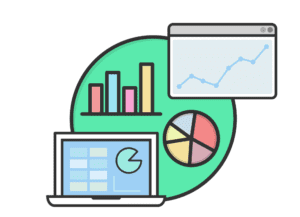What organisations like Poverty Child aim to achieve
Alongside supporting grass roots initiatives and fundraising, organisations like Poverty Child aim to promote a clearer understanding and awareness of child poverty in its various manifestations around the world. If people can be empowered to appreciate the complex nature of child poverty they are more likely to be sympathetic and supportive of tackling it.
Drawing attention to the plight of children living in poverty
Firstly, by highlighting issues which we consider are important, secondly by addressing contemporary events in the UK and from around the world and, thirdly, by making a case for routine, inclusive research into child poverty the world over. This not only means conducting research programmes, it means presenting data and findings to politicians and other people who have influence over public policy and social programmes. We need to underscore that child poverty is an issue which needs to be prioritised. It is vital to make the argument that researching the circumstances of children who live in poverty will ultimately prove beneficial for all members of their society.
 Why?
Why?
If young people who live in poverty can be empowered to improve their own circumstances the general population will enjoy a broader, better skilled and more motivated workforce which will collectively contribute to the economic efficiency and prosperity of the entire country. Tackling child poverty in the medium term is not so much about rolling out relief programmes, important though they are, but more a question of instilling aspiration in young people, and equipping them with vocational skills.
Who can facilitate that?
For the children, teachers and prominent members of their own communities can be highly influential in that role. Nurturing ambitions is of central importance. Prominent role models, especially from within local communities, are also influential.
However, when it comes to the broader political spectrum, the key stakeholders and potential influencers are researchers and organisations which compile and publish national statistics. Crucially, there are three key areas which should be reviewed and evaluated to promote a raised profile for child poverty: first, there needs to be a general awareness of key stakeholders; second, a clear understanding of those stakeholders’ potential reach, influence and ability to bring about change; and third, a clear understanding of the mechanics that are likely to bring about changes in the political sphere. This is likely to include access to sources of finance.
 Examples of these stakeholders
Examples of these stakeholders
Domestic research organisations; non-Government Organisations (NGOs) and international organisations with a vested interest, for example UNICEF; charities with an international presence which also work in the field, for example, Save the Children, the Red Cross; financial organisations which command a global horizon, like the World Bank; ethical campaigners; and smaller charities which contribute through resources, programmes and online discussion.
The message an organisation like Poverty Child conveys
All stakeholders aim to convey the simple message that by prioritising child poverty, not only is lasting, beneficial change desirable, it is also feasible, manageable and practical. Of course there are always going to be cultural, social and political sensibilities to address. Campaigns should be presented in inclusive, supportive and empowering ways. However, no matter what the specific circumstances facing an individual country, so long as there is a sincere desire to implement change the national government has the power, and can find the support, to make an effective difference.
A secondary compelling argument which small stakeholders can reiterate is that there is likely to be widespread support, and not only on the domestic front. Both strategically and financially NGOs and international organisations are ready to offer the benefits of their experience to relief programmes and child poverty campaigns. It is really a question of how best to harness and embed that potential support in a sensitive fashion for everyone’s benefit.
 Generating and sustaining interest in child poverty
Generating and sustaining interest in child poverty
Interest in an issue like child poverty is nurtured through data compiled from research. Once a research programme is established it can be adapted and revised on a regular basis. The results can be presented through media outlets, and may well prove to be powerful in influencing public opinion. This in turn will help to shape the political agenda. Open discussion of processes, data and progress aims to raise interest.
Those best positioned to make the case for tackling child poverty
Researchers, respected experts, a government minister, or representatives from NGOs or international organisations, alongside smaller organisations with an active online presence.
Ways in which small organisations help to make the case
Small organisations can look for opportunities to lobby politicians and influencers. This may be through a simple practice like publishing a blog which discusses and summarises issues which are considered pertinent to the cause. An organisation or charity could also hold online seminars, workshops, or post video messages. However, to be sure that the most appropriate people hear the message, charities can appeal directly and personally to individual stakeholders who, for example, may attend high level meetings.
 The way ahead to eradicate child poverty
The way ahead to eradicate child poverty
Putting together a basic audit of resources is another potentially important policy driver. It is likely to reveal significant gaps, capacity issues, funding shortfalls, and a need for well-defined, robust strategies. These areas can be addressed by drawing upon the experience of appropriate NGOs and other key stakeholders.
An overarching development plan to tackle child poverty will formalise goals, engage with or appoint researchers, and anticipate interim progress and outcomes by stating realistic targets. There is no reason why realism cannot be infused with ambition when evaluating the potential scale of a development plan’s impact. A specialist team can co-ordinate preparatory work and the reporting process. Official collaboration with a national statistics body should help to nurture momentum and profile raise. Harnessing the online presence of other interested groups will also help to galvanise awareness.
Once work is underway, how can organisations and stakeholders know if their input is working?
Regular reviews, meetings and further research should be central to any development plan. Ongoing concerns need to be reviewed candidly, tactfully and purposefully. Priorities may need adjusting, whether on a temporary basis or for the medium term. Continued regular research should prove to be illuminating. Once there are signs of a momentum shift in awareness and opinion, it is likely that other interested parties from the political world and the media will choose to become associated with the programme. That is a tipping point, because it can lead to a sea change in attitude and things can move quickly. Consequently, it is important to have the groundwork, development proposals and initial research in place, in anticipation of that moment. Maintaining momentum is crucial in any campaign’s viability and ultimate success.




